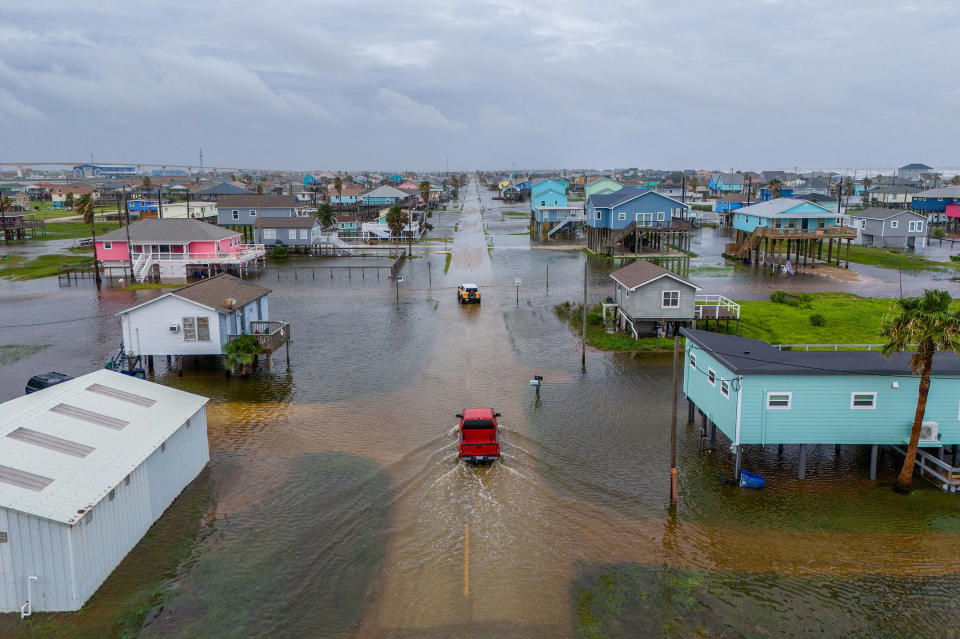Two tropical depressions could form, including one near Florida; Alberto dissipates after landfall in Mexico
Tropical Storm Alberto, the first named storm of the 2024 hurricane season, dissipated Thursday afternoon after it made landfall near Tampico, Mexico, a day after it had formed in the Gulf.
As of 5 p.m. Thursday, Alberto’s remnants were 380 miles southwest of Brownsville, Texas, traveling west at 24 mph, with maximum sustained winds of 30 mph, traveling over inland Mexico.
Separate from Alberto, forecasters also are watching two other potential systems, one in the Gulf and one east of the Bahamas, which could affect coastal northern Florida on Friday, though its impact to South Florida is expected to be insignificant.
“It doesn’t have much time to get its act together before it reaches the land areas,” George Rizzuto, a meteorologist for the National Weather Service Miami said during a weather briefing Thursday. “Impacts across South Florida would be limited to nearly nonexistent.”
Systems to watch
As of 2 p.m. Thursday, a disturbance in the same area of the Gulf of Mexico as Alberto has a 50% chance of forming in the next seven days. A broad area of low pressure should form over southeastern Mexico and northern Central America on Friday, possibly becoming a depression over the southwestern Gulf of Mexico this weekend.
Meanwhile, forecasters are watching an area of storminess several hundred miles east of the northwestern Bahamas that could approach the southern U.S. East Coast, potentially including Florida, late this week.
As of 2 p.m. Thursday, it has a 40% chance of development over the next two days, with some slow development possible thereafter while the system moves west-northwestward. Forecasters expect the system to reach the east coast by Friday.
An Air Force Reserve reconnaissance aircraft is on its way to investigate the system, the NHC said.
The system is likely to stay north of South Florida, and impact coastal areas farther up the coast.
“For the most part we really aren’t expecting any significant impacts to South Florida from this system,” Rizzuto said Thursday.
First named storm of season
Alberto weakened into a tropical depression Thursday morning before fully dissipating later in the afternoon. Its remnants continued to cause heavy rains and flash flooding in northeastern Mexico, the hurricane center said in its 5 p.m. update, the last advisory for Alberto.
“The remnants of Alberto will continue to produce heavy rainfall over northeastern Mexico with life-threatening flooding and mudslides likely,” meteorologists said.
The National Hurricane Center has discontinued all tropical storm warnings in Mexico. It had previously issued a warning stretching from the Mexico border north along the Gulf Coast to near Houston.
A few tornadoes were also possible Thursday night in lower South Texas and southeast areas of the state, the NHC said.
Inland in Mexico and South Texas, rainfall could be significant and potentially dangerous, given the mountainous terrain in some of the region.
2024 season
The 2024 hurricane season, which officially began June 1, is expected to be extremely active.
In its annual May outlook, the National Oceanic and Atmospheric Administration said that the 2024 hurricane season has an 85% chance of being above normal, with 17 to 25 named storms with minimum sustained winds of 39 mph, and eight to 13 hurricanes. An average year has 14 named storms and seven hurricanes.
In addition, NOAA has forecast four to seven major hurricanes for 2024, meaning those that are Category 3 or above.
Experts at Colorado State University stated in their 2024 forecast that the U.S. East Coast, including Florida, had a 34% chance of a major hurricane making landfall this year. The average from 1880-2020 was 21%.
Forecasters say that the record-warm water temperatures that now cover much of the Atlantic Ocean will continue into peak hurricane season from August to October. That warm water fuels hurricanes. By early June, the tropical Atlantic was already as hot as it usually is in mid-August — peak hurricane season.
Hurricane season officially ends Nov. 30.
(Sun Sentinel staff writer Robin Webb contributed to this report.)
____


